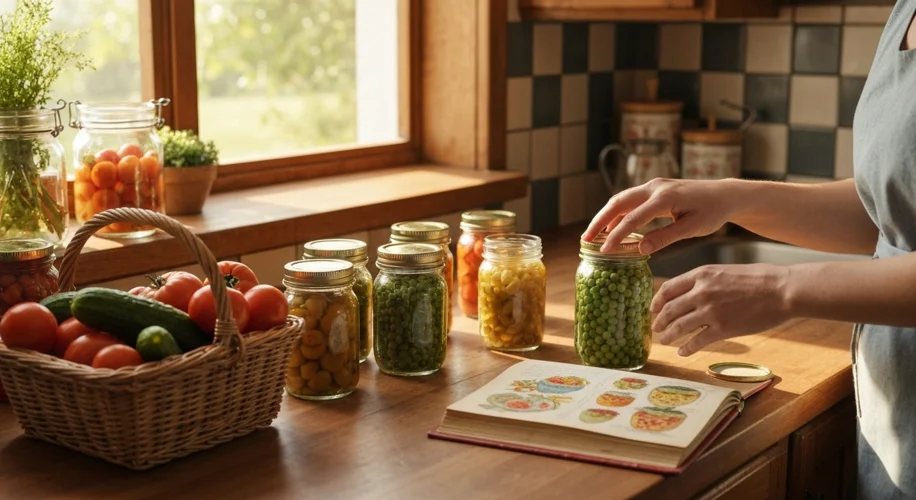As the summer sun ripens our gardens, I find myself thinking about how to best enjoy this bounty long after the growing season ends. For me, that means turning to time-honored methods like canning and pickling. It’s a rewarding way to extend the freshness and flavor of seasonal produce, connecting us more deeply to our food.
From my garden to your table, preserving the harvest is an art I’ve come to love. This year, my cucumbers are abundant, and my tomato plants are practically groaning with fruit. Instead of letting any of it go to waste, I’m preparing to put them up using a few different techniques.
Canning: Capturing Summer in a Jar
Canning is essentially sealing food in airtight jars and heating them to a temperature that destroys spoilage microorganisms. For high-acid foods like fruits and pickles, a boiling water bath method is typically sufficient. For low-acid foods, such as vegetables and meats, a pressure canner is necessary to reach higher temperatures.
- Getting Started: You’ll need mason jars, lids, rings, and a large pot (either a boiling water canner or a pressure canner, depending on your food). Sterilizing your jars and equipment is crucial for safety.
- Packing Your Jars: Whether you’re preserving whole fruits, chopped vegetables, or a delicious jam, pack them into the jars, leaving the appropriate headspace as recommended by your recipe. Add your liquid (syrup, brine, or water) and remove any air bubbles.
- Processing: Process the jars according to tested recipes, ensuring they reach the correct temperature and time. Once removed, the lids should seal as they cool, creating that satisfying ‘pop’.
Pickling: A Tangy Twist on Preservation
Pickling uses an acidic brine, usually vinegar-based, to preserve food and impart a distinct tangy flavor. It’s fantastic for vegetables like cucumbers, beans, carrots, and even beets.
- The Brine: The magic is in the brine – typically a mixture of vinegar, water, salt, and sugar, often flavored with spices like dill, garlic, mustard seeds, and peppercorns. The acidity of the vinegar is key to preservation.
- The Process: Fresh produce is packed into sterilized jars, and the hot brine is poured over it. For quick pickles, they can be refrigerated and eaten within a few weeks. For shelf-stable pickles, they are processed using the boiling water bath method, similar to canning.
Tips for Success
- Use Fresh, High-Quality Produce: The better the produce going in, the better the preserved product will be.
- Follow Tested Recipes: Especially when canning, use recipes from reliable sources like the National Center for Home Food Preservation or Ball Canning. Safety is paramount.
- Sterilize Everything: Jars, lids, and utensils that come into contact with the food should be clean and preferably sterilized to prevent spoilage.
- Proper Storage: Store canned and pickled goods in a cool, dark, dry place. Check seals before opening. Refrigerate opened jars.
Preserving the harvest is more than just storing food; it’s about savoring the peak flavors of the season. It’s a tangible connection to the earth and a delicious way to eat sustainably. Happy preserving!

